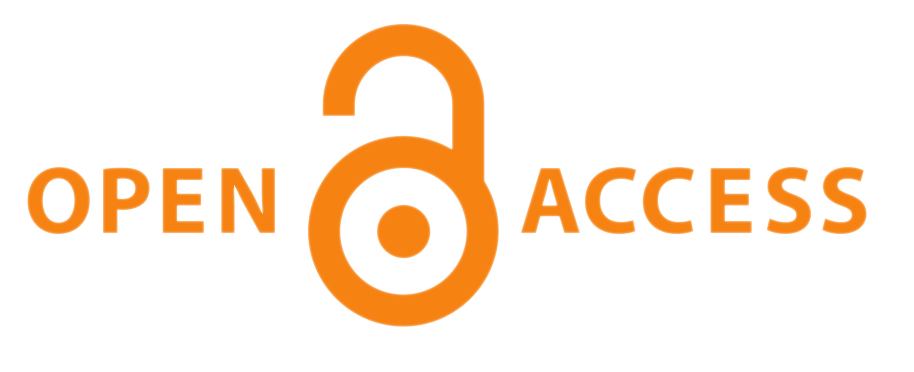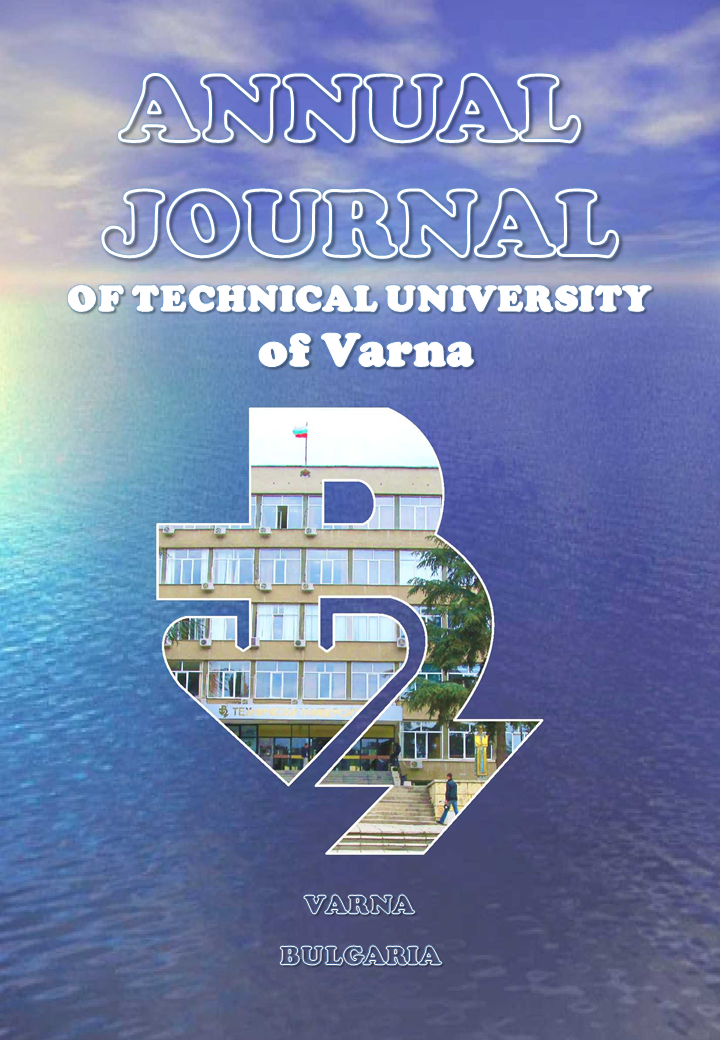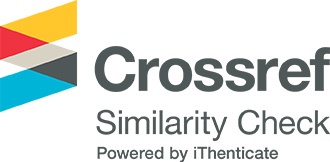Experimental study on HHO electrolyzer efficiency – influence of the number of plates and their distance
DOI:
https://doi.org/10.29114/ajtuv.vol6.iss1.252Keywords:
hydroxy gas, oxyhydrogen gas, HHO gas, electrolyser, MMWAbstract
The present paper explores the factors influencing the efficiency of an HHO-gas-electrolyzer. The experiments were held in the respective laboratory at the Technical University of Varna with a principal focus on two of these factors –i.e., distance between the plates and the number of plates in a wet electrolyzer. The scientific tests were performed with all the remaining conditions being held constant and the appropriate results were obtained and visualized to disclose the most efficient electrolyzer setups.
Downloads
References
<p style="text-align: justify;">Choodum, N., Sangwichien, C. & Yamsaengsung, R. (2019). Optimization of a Closed-Loop HHO Production System for Vehicles and Houses. <em>Environmental Progress & Sustainable Energy, 38</em>(1), 268 - 277.<br /><a href="https://doi.org/10.1002/ep.12909" target="_blank">Crossref</a></p>
<p style="text-align: justify;">Enshasy, H, Al-Haija, Q., Al-Amri, H., Al-Nashri, M., Al-Muhaisen, S. & Al-Tarayrah, M. (2020a). A Comprehensive Construction of Hydrogen-Hydrogen-Oxygen (HHO) Cell as Renewable Energy Storage. <em>WSEAS TRANSACTIONS ON SYSTEMS, 19</em>, 121-132.<br/> <a href="https://doi.org/10.37394/23202.2020.19.17">Crossref</a></p>
<p style="text-align: justify;">Enshasy, H, Al-Haija, Q., Al-Amri, H., Al-Nashri, M., Al-Muhaisen, S. & Al-Tarayrah, M. (2020b). Elaborated Mathematical Model for Hydrogen-Hydrogen-Oxygen Energy Storage Cell. <em>WSEAS TRANSACTIONS ON CIRCUITS AND SYSTEMS. 19, </em>116-128.<br /><a href="https://doi.org/10.37394/23201.2020.19.14" target="_blank">Crossref</a></p>
<p style="text-align: justify;">European Union. (2021). <em>Proposal for DIRECTIVE OF THE EUROPEAN PARLIAMENT AND OF THE COUNCIL (2021) amending Directive (EU) 2018/2001 of the European Parliament and of the Council, Regulation (EU) 2018/1999 of the European Parliament and of the Council and Directive 98/70/EC of the European Parliament and of the Council as regards the promotion of energy from renewable sources, and repealing Council Directive (EU) 2015/652.</em></p>
<p style="text-align: justify;">Neukirchner, L., Görbe, P., Magyar, A. & Attila, G. (2014). Measurement-based modeling and simulation of a hydrogen generating dry cell for complex domestic renewable energy systems. <em>Hungarian Journal of Industry and Chemistry, 42</em>(2), 85–89. <br /><a href="https://www.researchgate.net/publication/280729095" target="_blank">https://www.researchgate.net/publication/280729095</a></p>
<p style="text-align: justify;">Streblau, M., Aprahamian, B., Simov, M, Dimova, T. (2014). The influence of the electrolyte parameters on the efficiency of the oxyhydrogen (HHO) generator. <em>18th International Symposium on Electrical Apparatus and Technologies (SIELA), </em>(pp. 1-4). IEEE<em>.</em><br/> <a href="https://doi.org/10.1109/siela.2014.6871898"target="_blank">Crossref</a></p>
<p style="text-align: justify;">Subramanian, B. & Thangavel, V. (2020). Analysis of onsite HHO gas generation system. <em>International Journal of Hydrogen Energy, 45</em>(28), 14218-14231.<br/> <a href="https://doi.org/10.1016/j.ijhydene.2020.03.159">Crossref</a></p>
<p style="text-align: justify;">Sudrajat ,A., Handayani, E., Tamaldin, N. & Yamin, A. (2018). Principle of generator HHO hybrid multistack type production technologies to increase HHO gas volume. In <em>SHS Web of Conferences, 49</em>, p.02016. EDP Sciences.<br/><a href="https://doi.org/10.1051/shsconf/20184902016" target="_blank">Crossref</a></p>
<p style="text-align: justify;">Vasilev, R. & Nedelchev, I. (2011). Electrolytic cells for oxyhydrogen productions. Effects of circulation of the electrolyte and the electrode gap on the effectiveness. <em>Annual of the Technical University of Varna, 1</em>, pp. 91-95. <br/><a href="https://www1.tu-varna.bg/tu-varna/images/izdatelska_deinost/god/godishnik_2011/Godishnik_TU_2011_tom_I.pdf"target="_blank">Link</a></p>
Downloads
Published
How to Cite
Issue
Section
License
PUBLICATION AGREEMENT
Annual Journal of Technical university of Varna (AJTUV) aims to guarantee that original material is published while at the same time giving significant freedom to our authors. For that matter, we uphold a flexible copyright policy meaning that there is no transfer of copyright to the publisher and authors retain exclusive copyright to their work.
When submitting a manuscript the Corresponding Author is required to accept the terms and conditions set forth in our Publication Agreement as follows:
CORRESPONDING AUTHOR'S GRANT OF RIGHTS
The Corresponding Author grants to AJTUV, during the full term of copyright and any extensions or renewals of that term the following:
• An irrevocable non-exclusive right to publish, reproduce, republish, transmit, distribute and otherwise use the Work in electronic and print editions of the publication and in derivative works throughout the world, in all languages, and in all media now known or later developed.
• An irrevocable non-exclusive right to create and store electronic archival copies of the Work, including the right to deposit the Work in open access digital repositories.
• An irrevocable non-exclusive right to license others to reproduce, translate, republish, transmit and distribute the Work under the condition that the Authors are attributed (Currently this is carried out by publishing the Work under a Creative Commons Attribution 4.0 Unported License).
Copyright in the Work remains with the Authors. Authors retain patent, trademark and other intellectual property rights.
CORRESPONDING AUTHOR'S DUTIES
When distributing or re-publishing the Work, the Corresponding Author agrees to credit the AJTUV in which the Work is published as the source of first publication. Corresponding Author warrants that Co-authors will also credit the AJTUV in which the Work is published as the source of first publication when they are distributing or re-publishing the Work.
CORRESPONDING AUTHOR'S WARRANTY
The Corresponding Author represents and warrants that the Work does not violate or infringe the law or the rights of any third party and, specifically, that the Work contains no matter that is defamatory or that infringes any literary or proprietary rights, intellectual property rights, or any rights of privacy. The Corresponding Author warrants that the Work is original, has not been formally published in any other peer-reviewed journal or in a book or edited collection, and is not under consideration for any such publication. The Corresponding Author also warrants that he or she has the full power to make this agreement. If the Work was prepared jointly the Corresponding Author warrants that all Co-authors consent to the submission and publication of the Work.
The Corresponding Author agrees to hold AJTUV harmless from any breach of the aforestated representations and warranties.
AJTUV DUTIES AND RIGHTS
AJTUV agrees to publish the Work attributing it to its Authors. AJTUV is granted the authority to enforce the rights from this agreement, on behalf of the authors, against third parties (for example in cases of plagiarism or copyright infringements).
AJTUV's Privacy Statement
The names and email addresses entered in the AJTUV website will be used only and exclusively for the stated purposes of this annual journal and will not be made available for any other purpose or to any other party.
All personal information supplied will remain within publisher and will not be shared with any external entity unless prior permission is given.
Your personal information will not be sold, distributed or published in any manner whatsoever.









